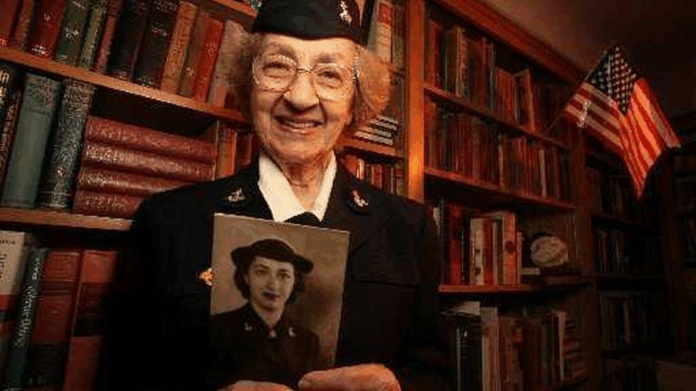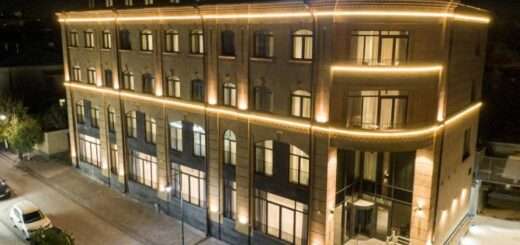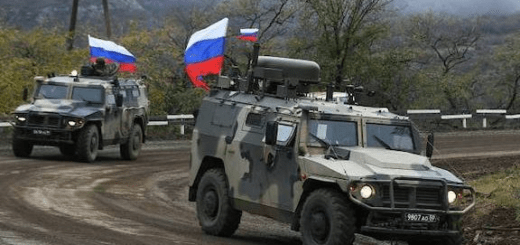‘Uncovering a Veil of Secrecy’

FRESNO — For 50 years, Arpeni “Penny” Mirigian kept the secret about what she really did in the Navy WAVES during World War II. When people asked, she simply said: “I was a radio operator.” “Spy” would have been closer to the truth. From 1943 to 1945, Mirigian was part of an elite group of “intercept operators” who typed up Japanese radio broadcasts to be decoded. The work was top secret. “It was highly classified,” she said. “They drilled into us that we were doing highly secret work, and we couldn’t tell anyone – including when you wrote to your parents.”
The Fresno woman was one of just a few still around to tell their stories. “They were told if they divulged what they were doing, even though they were women, they’d be shot,” said John Gustafson, membership secretary of the U.S. Naval Cryptologic Veterans Association in Pensacola, Florida. “Some still won’t talk about it.” So Mirigian kept quiet. She got married. She had four children. She divorced and – much later – she married again. She taught English at Edison High School for 23 years before retiring. Through it all, nobody knew that she once had lived a very different life. Yet she never forgot about the war, or the four close friends she made in the WAVES – or the blue uniform in her closet that still fits as well as it did five decades ago.
President Franklin D. Roosevelt established the WAVES – Women Accepted for Volunteer Emergency Services – in 1942. The WAVES made up about 2.5% of the Navy’s personnel by the end of the war, according to records from the Naval Historical Center at the Department of the Navy. Women served in a variety of duties, from medical to intelligence. About 4,000 WAVES were intercept operators during World War II, Gustafson said. “By putting women in there, it freed up the men to go overseas,” he said.
Mirigian enlisted in 1943, three months before she was to graduate from then Fresno State College. She was attracted by the uniform — a cute blue with white gloves. The Army’s was a khaki color. It just looked terrible,” Mirigian said. “You’re a woman. You want to look nice.” In November 1943, she boarded a troop train in Fowler. “I was so proud and excited,” she said. “It was an adventure. I was never on a train.”
She rode the train for three days to her boot camp at Hunter College in New York. After six weeks of basic training, she was assigned to Bainbridge Island in Washington. Until then, Mirigian, 21, had never lived away from home. Her task was to listen to Japanese radio broadcasts being made in Morse Code. She sat in a room full of typewriters with headphones on for eight-hour shifts. The intercept operators also included Navy sailors.
“You were just listening to dots and dashes,” Mirigian said. “When we would hear it, we would type it on a code typewriter.” What the operators typed didn’t make any sense to them. “Transcribed messages were given to the code breakers to unravel, but the operators weren’t told what the messages meant. The five-letter grouping Mirigian recalled, although random, was typical of the Japanese,” Gustafson said. “Japan used several codes to communicate different information — for weather, the location of merchant marine ships and the Japanese Navy. It took months to break one of Japan’s codes,” Gustafson said, “but the American military broke most of them.”
Mirigian became close friends with four other WAVES living in tight quarters in the barrack. On their time off, the friends went bowling, out to eat or to a movie on the base. But they never talked about work. When the war ended, the women exchanged addresses, but they didn’t contact each other.
The Navy began declassifying information on the intercept operators’ work in the early 1980’s, Gustafson said. Before then, the federal government didn’t require any war information to be declassified, he said, “so it would just sit there as classified information.”
Mirigian didn’t learn about the declassification until 1996, when she read about it in a Navy newsletter. “In a sense, I was relieved,” Mirigian said. It had been a hard secret to keep, especially if someone made fun of women’s service in World War II. “But I had to rise above it,” she said. “I was sworn to secrecy, and if you start talking, you never know what you’re going to say.”
When she finally could talk, the first people she told were her parents. Mirigian’s family and friends were shocked when they heard the truth about her Navy assignment. “I knew she went into the service – that was the talk of the town,” said Milton Torigian, who grew up with Mirigian in Fowler and has been a CPA for many years. “I just thought she was a clerk.”
The next thing Mirigian did was to contact “the girls” – the four friends she hadn’t seen or talked to in 50 years. They made plans to meet at a Navy veterans’ reunion in Seattle. “When we found each other, we were squealing like young, silly girls,” Mirigian said. They caught up with each other’s lives and they’ve been in touch ever since. Mirigian also finally let her husband in on the truth. She had married former Fowler High classmate George Emerzian in 1989 at their 50th high school reunion. When he learned about his wife’s secret past, Emerzian was impressed. “I thought there weren’t too many women who could have done that kind of work,” he said.
Note: Arpeni “Penny” Mirigian passed away on May 3, 2019 in Fresno at the age of 97, and was buried with military honors at the Ararat Armenian Cemetery on June 29, 2019. For her distinctive service she received the American Campaign and World War II Victory Medals. For more information on Penny Mirigian’s military service and other Armenian-American World War II, Korea, and Vietnam Heroes, go to Richard N. Demirjian’s 2003 book The Faces of Courage. The Armenian Cultural Conservancy has a copy available for ACC members to check out. Arpeni was a well-known and respected figure in the Armenian community through her active involvement with the Armenian-American Citizens’ League, the Armenian Community School, the California Armenian Home, and the Holy Trinity Armenian Apostolic Church.





